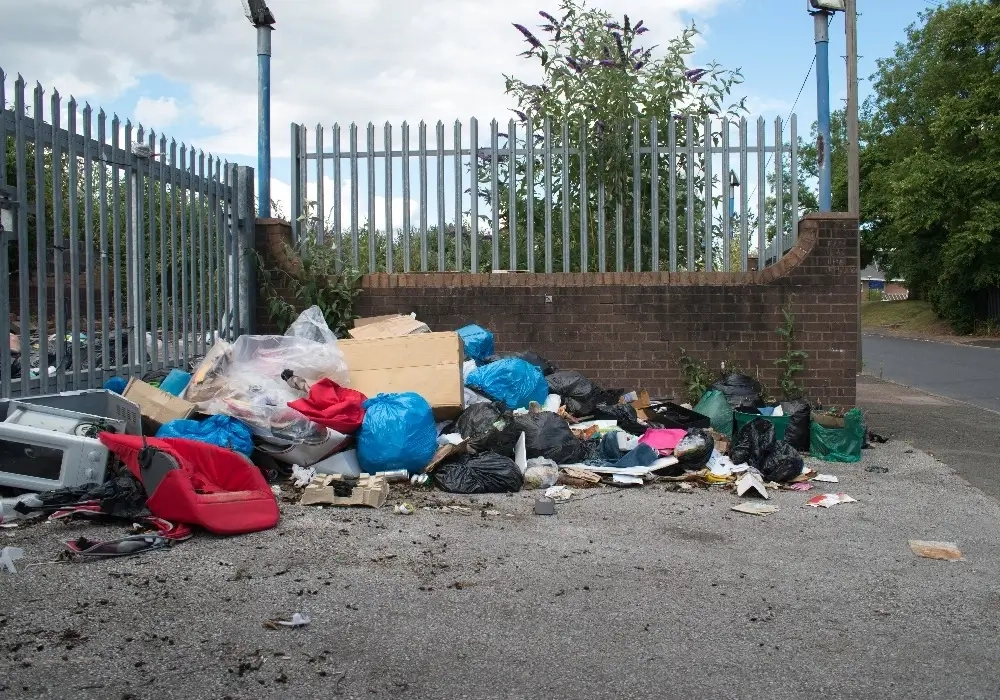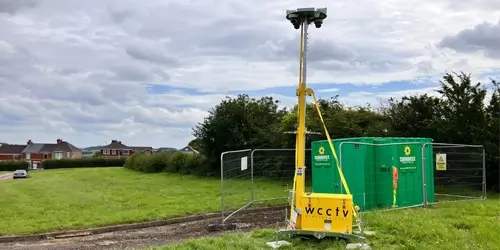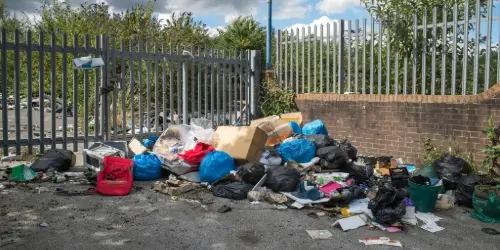For Local Authorities and many Public Sector departments, fly-tipping is an increasingly widespread problem across the UK, affecting urban and rural locations.
Cases have increased exponentially, with bin strikes and tip closures only creating further issues for some Councils.
In England alone, it was reported that there were 1.15 million incidents of fly-tipping in the year 2023/24, representing an increase of 6% from the previous year.
And with increased cases come increased clean-up costs, all of which fall on Local Authorities shoulders to manage the operations of and any associated fees. Not to mention the health risk and environmental dangers posed by fly-tipping and issues they create within communities.
Having worked with Local Authorities seeking to combat fly-tipping for over 20-years, we have utilised our unrivalled knowledge to explore the impact of this crime and ways it can be reduced.
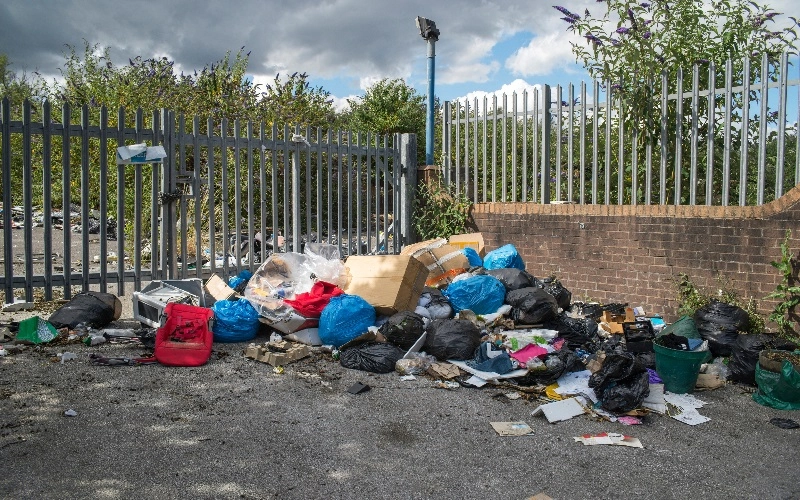
What Is Fly-Tipping?
Fly-tipping is the illegal disposal or dumping of liquid or solid waste onto land or water that is not permitted to receive it. The waste is usually dumped to avoid the costs associated with legal disposal.
Fly-tipped waste can be found anywhere, on roadsides, rural locations, in lay-bys or on private land. It can be perpetrated by individuals or by organised crime gangs.
Individuals tend to illegally dispose of household waste items such as electrical items, furniture or bin bags full of rubbish in the street.
Larger scale fly-tipping can involve several truckloads of construction and demolition waste being illegally disposed of.
Even registered waste disposal firms employed to carry out legal and responsible waste management have been caught fly-tipping as a means of cost-cutting.
What are the Most Frequently Fly-tipped Items?
Recent statistics showed that household waste generation amounted to 21.8 million tonnes over the year 2023/24, and this has likely contributed to an increase in fly-tipping.
But, from this household waste, what items are most frequently disposed of?
Below outlines the main fly-tipped items across the UK:
- Vehicle components: parts, tires, oil
- Construction materials: timber, asbestos, rubble
- Hazardous materials: syringes, used nappies, animal waste
- White goods: fridges, freezers, dishwashers, washing machines
- Furniture: mattresses, sofas, tables, beds
- Garden waste: grass, shrubs, rubble, bricks, fence panels
- Household waste: children's toys, wood, prams, black bags of rubbish, packaging materials
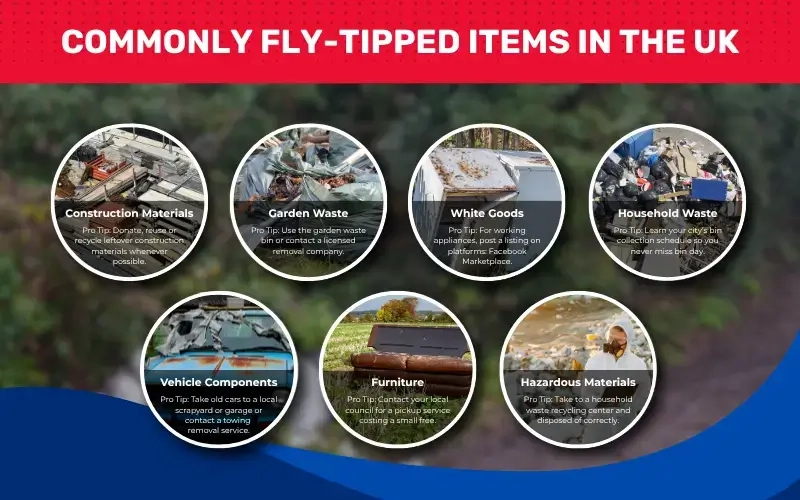
What Causes Fly-Tipping?
Earlier on in the article, we touched upon key contributors to fly-tipping, including the sheer volume of waste produced, bin strikes and tip closures.
However, some factors associated with fly-tipping increases are specific to a particular Local Authority, so we’re now going to explore the other main factors linked to this rise:
Cost Avoidance
Legally disposing of business and commercial waste involves costs.
As a rough estimate, it costs £180 to £250 for a general business waste collection, with cost varying based on the items you’re wishing to dispose of.
For demolition waste removal, waste disposal costs generally range between £64 to £94 per hour for manual clearance, or around £300 per 18-yard skip.
Both individuals and companies frequently look to fly-tip based on cost, and with prices likely to rise and options limited, this is only expected to increase.
Lack of access to legal disposal
The number of recycling centres have decreased over recent years, especially following the pandemic and this has limited access for the general public to remove their items correctly.
Due to this, Councils and Local Authorities are left with further issues such as disgruntled communities, larger clean-up costs and lost time.
Additionally, those without access to vehicles may not be able to transport household waste to local recycling centres and instead resort to dumping it on the street.
Similar to tip closures, if recycling centre closures continue to increase, further access issues will be created and this is only going to lead to one outcome.
Lack of Education on Proper Waste Disposal Methods
Many individuals are unaware that fly-tipping is illegal and that they can face prosecution based on this, therefore on a number of occasions, waste is removed illegally due to a lack of awareness and knowledge on the topic. This includes businesses also.
Professionals within these industries may not be aware of the regulations surrounding waste management and fly-tipping.
Profiteering
A rise in 'rouge' waste disposal firms who help either knowing or unwitting homeowners and businesses engage in illegal waste disposal in order to profit off of themselves.
These companies will undercut the prices of official waste disposal services to entice individuals and businesses to utilise their service, presenting it as a cost-saving option for them.
And with budgets stretched for households and businesses alike, any saving can be tempting, even if this leads to fly-tipping in the process.
What is the Impact of Fly-Tipping?
Fly-tipping has far-reaching consequences for our communities and the environment, with taxpayers burdened with the knock-on effect regarding the costs of expensive clean-up operations.
Some of the key facts around the impact of fly-tipping include:
- Most commonly fly-tipped items have high plastic content. These items are non-biodegradable and when the plastic begins to sink into water and soil, they pollute the environment.
- 11 million tonnes of plastic enters the oceans every year, severely affecting ocean life
- The waste dumped by fly-tippers attracts flies and vermin, creating the potential for the spread of disease
- The cost of clearance for ‘tipper lorry load’ fly-tipping to Local Authorities in England in 2023/24 was £13.1 million
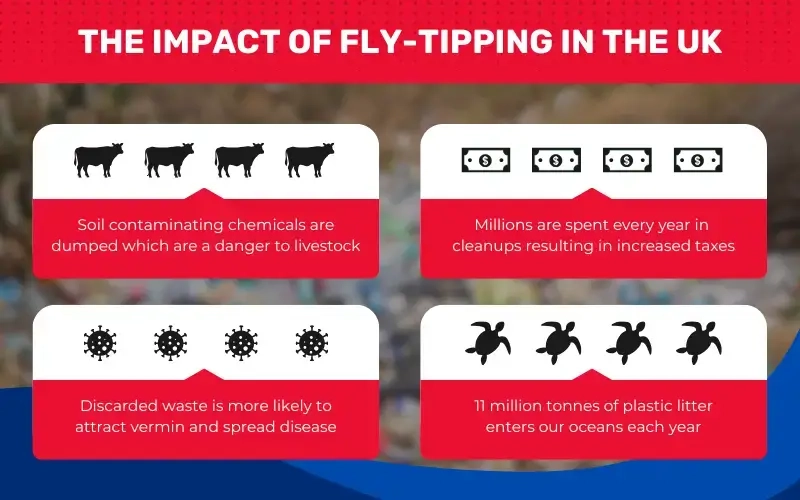
How Can Fly-Tipping be Prevented?
As the responsibility of clean-up operations falls on Local Authorities, fly-tipping prevention measures are typically Council driven initiatives.
However, as we have outlined, fly-tipping can occur on private property and directly impact business and property owners which in this instance may require their involvement also.
Being the leading provider in Redeployable Cameras and Rapid Deployment CCTV Towers, we have supported Public Sector organisations across the UK with fly-tipping prevention for over 20-years now. but
Below is the advice we’d recommend you apply to every area affected by fly-tipping:
Increase Visibility
Most fly-tipping occurs at night when those responsible believe there is a lesser risk of being caught or identified.
Increasing lighting in areas affected by fly-tipping is a simple and effective deterrent that will also aid in the identification of offenders.
This is particularly beneficial for lay bys as it will also help with the identification of any vehicles involved too.
Deploy Enforcement Officers
If your borough is being affected by fly-tipping, consider investing in mobile security personnel to patrol the areas.
These enforcement officers work as visible deterrents and also provide boots on the ground that can capture criminals in the act, prevent fly-tipping or at least minimise the risks created by it.
Install CCTV
Redeployable CCTV Cameras and CCTV Towers are the ideal solution to deter and detect fly-tipping.
Their wireless capabilities allow them to be quickly and easily deployed to fly-tipping hotspots and relocated once the issues are resolved.
Redeployable CCTV tends to work well in urban locations, whereas CCTV Towers suit rural locations and lay bys.
We offer both solution types, ensuring complete power autonomy and relocatability with minimal disruption.
Our cameras can be fitted with sophisticated ANPR technology to aid in identifying offenders and secure prosecutions. Boosting the support Local Authorities and Councils have in tackling fly-tipping through mobile CCTV.
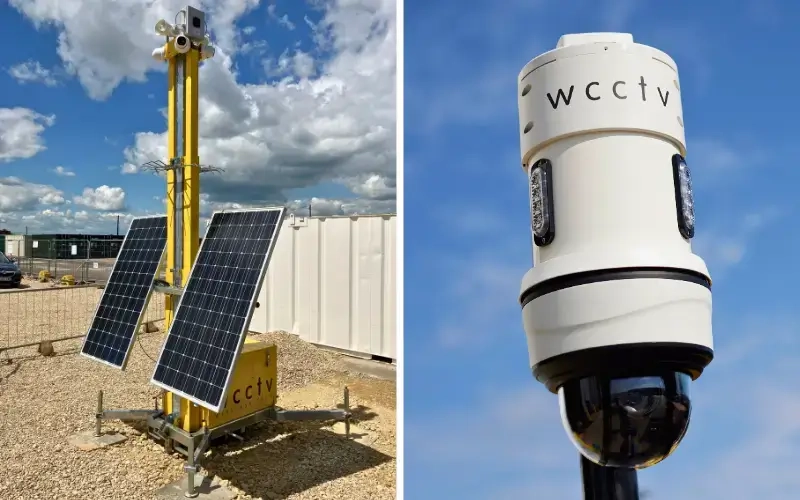
Signage
If you install CCTV, installing signage will help boost its effectiveness as a preventative deterrent.
Potential fly-tippers will be aware of any recording and monitoring taking place and fear any criminal consequences faced by this.
It’s simple enough to add, but can be a great visible deterrent to any individuals considering illegally removing their waste in your area and affecting the community.
Fixed Penalties
One of the key motivating factors for those involved in fly-tipping is cost-cutting, but if they face a Fixed Penalty Notice, this will no longer be the case.
If perpetrators are aware that you’re actively monitoring fly-tipping hotspots and imposing fines with serious financial repercussions, it is likely to be a highly effective deterrent.
This means remaining on top of hotspots, any past offenders and keeping track of any contributing factors that could increase the likelihood of fly-tipping occurring.
Effective, Easy-to-Install CCTV for Fly-Tipping Prevention
Redeployable CCTV Cameras and CCTV Towers allow for the direct targeting of locations affected by fly-tipping.
They help Police and Local Authorities gather evidence for prosecutions and act as a visual deterrent to potential offenders.
Once the issues in a specific area have been addressed, our highly-portable cameras can be moved to other locations where monitoring is required and work completely independent of mains power and internet.
To enhance their effectiveness at tackling fly-tipping, we can supply them with video analytics and ANPR cameras to capture clear images of licence plates.
The ANPR cameras connect directly into a nationally hosted licence plate data server to allow for the immediate identification of offenders.
And for extra support, all our products are backed by Stellifii, our cloud-based ecosystem that brings together wireless connectivity, IoT technology and reporting tools to provide deeper insights that enhance your crime response without creating any complexities for you.
Finally, our fully-managed surveillance systems don't just record fly-tipping incidents. They are fitted with a blue light alarm, live audio address system and remote monitoring services that proactively catch criminals in the act and issue an immediate warning - preventing the crime from happening.
